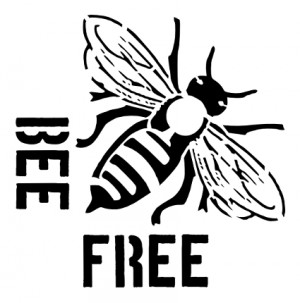Table of Contents
Group 6
Anarchist Bees
Wiki site of the practical exercise of the V Southern-Summer School on Mathematical Biology.
Here you will find the exercise assignment and the group's products.
If you are a group member login to edit this page, create new pages from it, and upload files.
Introduction
1. Reproductive division of labour is a characterising feature of social insects.
2. Even though workers are physiologically capable of reproducing, worker-derived drones are extremely rare in queenright Apis mellifera colonies.
3. Most worker-laid drone eggs are eaten by other workers (a phenomenon known as worker policing).
4. There is some evidence for reduction of working behavior in reproductive workers, thus there could be a reduction in colony fitness if there were too many anarchist bees.
5. Sterility in workers is (mostly) regulated by a single locus, called Anarchy.
6. In other groups of Hymenoptera, such as pomerine ants, workers can also reproduce sexually, so that a numbers of species have a different type of social organization without the need of the queen caste.
Assignment
Investigate with mathematical models how the dynamics of worker reproduction in Hymenoptera affects the stability of colonies.
Proposed Questions
- Is it possible that worker reproduction may occur at a stable rate without destabilizing the colony as a whole?
- How does sexual reproduction between workers changes such stability?
References
Barron, A. B., Oldroyd, B. P. & Ratnieks, F. L. Worker reproduction in honey-bees (Apis) and the anarchic syndrome: a review. Behav Ecol Sociobiol 50, 199–208 (2001). pdf
Barron, A. B. & Oldroyd, B. P. Social regulation of ovary activation in ’anarchistic’ honey-bees (Apis mellifera). Behav Ecol Sociobiol 49, 214–219 (2001). pdf
Dampney, J. R., Barron, A. B. & Oldroyd, B. P. Measuring the cost of worker reproduction in honeybees: work tempo in an ‘anarchic’ line. Apidologie 35, 83–88 (2004). pdf
Peeters, C. The Occurrence of Sexual Reproduction among Ant Workers. Biological Journal of the Linnean Society 44, no. 2 (October 1, 1991): 141–52. doi:10.1111/j.1095-8312.1991.tb00612.x. pdf
Ronai, I. et al. Anarchy Is a Molecular Signature of Worker Sterility in the Honey Bee. Mol Biol Evol msv202 (2015). doi:10.1093/molbev/msv202 pdf
Wenseleers, T., and Francis L. W. Ratnieks. 2006. Comparative Analysis of Worker Reproduction and Policing in Eusocial Hymenoptera Supports Relatedness Theory. The American Naturalist 168 (6): E163–79. doi:10.1086/508619. pdf

